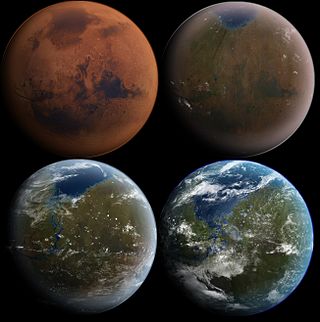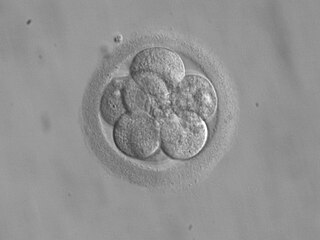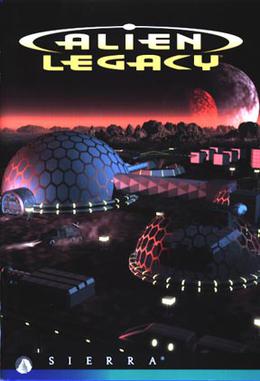Plot
A six-block suburban area –people and all– is teleported to Luminos. The Luminoids will study the feasibility of enslaving humans because Luminoids suffer from a genetic disease which condemns them to become as immobile as rocks as they age.
Eventually, a suburbanite is introduced to the hideous Luminoid rulers, who reveal their plans and that the punishment for disobedience is to be touched by a Luminoid and thereby contract their terrible disease.
The humans realize that they've been trapped with no chance of returning home. They accept that their former lives are over. Even submission to the Luminoids would not prevent inadvertent infection. All that's left is defiance and protecting the rest of humanity back on Earth. In a moving final scene, they willfully contract the disease from each other, thus choosing death over slavery, and rendering the Luminoids' experiment inconclusive. The abduction of the human race is proven infeasible, and abandoned.

Extraterrestrial life, alien life, or colloquially simply aliens is life which does not originate from Earth. No extraterrestrial life has yet been conclusively detected. Such life might range from simple forms such as prokaryotes to intelligent beings, possibly bringing forth civilizations that might be far more advanced than humanity. The Drake equation speculates about the existence of sapient life elsewhere in the universe. The science of extraterrestrial life is known as astrobiology.

Interplanetary spaceflight or interplanetary travel is the crewed or uncrewed travel between stars and planets, usually within a single planetary system. In practice, spaceflights of this type are confined to travel between the planets of the Solar System. Uncrewed space probes have flown to all the observed planets in the Solar System as well as to dwarf planets Pluto and Ceres, and several asteroids. Orbiters and landers return more information than fly-by missions. Crewed flights have landed on the Moon and have been planned, from time to time, for Mars, Venus and Mercury. While many scientists appreciate the knowledge value that uncrewed flights provide, the value of crewed missions is more controversial. Science fiction writers propose a number of benefits, including the mining of asteroids, access to solar power, and room for colonization in the event of an Earth catastrophe.

Space colonization is the use of outer space or celestial bodies other than Earth for permanent habitation or as extraterrestrial territory.

Terraforming or terraformation ("Earth-shaping") is the hypothetical process of deliberately modifying the atmosphere, temperature, surface topography or ecology of a planet, moon, or other body to be similar to the environment of Earth to make it habitable for humans to live on.

The giant-impact hypothesis, sometimes called the Big Splash, or the Theia Impact, is an astrogeology hypothesis for the formation of the Moon first proposed in 1946 by Canadian geologist Reginald Daly. The hypothesis suggests that the Early Earth collided with a Mars-sized dwarf planet of the same orbit approximately 4.5 billion years ago in the early Hadean eon, and the ejecta of the impact event later accreted to form the Moon. The impactor planet is sometimes called Theia, named after the mythical Greek Titan who was the mother of Selene, the goddess of the Moon.

Space and survival is the idea that the long-term survival of the human species and technological civilization requires the building of a spacefaring civilization that utilizes the resources of outer space, and that not doing this might lead to human extinction. A related observation is that the window of opportunity for doing this may be limited due to the decreasing amount of surplus resources that will be available over time as a result of an ever-growing population.
The zoo hypothesis speculates on the assumed behavior and existence of technologically advanced extraterrestrial life and the reasons they refrain from contacting Earth. It is one of many theoretical explanations for the Fermi paradox. The hypothesis states that alien life intentionally avoids communication with Earth to allow for natural evolution and sociocultural development, and avoiding interplanetary contamination, similar to people observing animals at a zoo. The hypothesis seeks to explain the apparent absence of extraterrestrial life despite its generally accepted plausibility and hence the reasonable expectation of its existence. A variant on the zoo hypothesis suggested by the former MIT Haystack Observatory scientist John Allen Ball is the "laboratory" hypothesis, in which humanity is being subjected to experiments, with Earth serving as a giant laboratory.

Planetary protection is a guiding principle in the design of an interplanetary mission, aiming to prevent biological contamination of both the target celestial body and the Earth in the case of sample-return missions. Planetary protection reflects both the unknown nature of the space environment and the desire of the scientific community to preserve the pristine nature of celestial bodies until they can be studied in detail.

Embryo space colonization is a theoretical interstellar space colonization concept that involves sending a robotic mission to a habitable terrestrial planet, dwarf planet, minor planet or natural satellite transporting frozen early-stage human embryos or the technological or biological means to create human embryos. The proposal circumvents the most severe technological problems of other mainstream interstellar colonization concepts. In contrast to the sleeper ship proposal, it does not require the more technically challenging 'freezing' of fully developed humans.
My Teacher Is an Alien is a four-book science fiction children's book series authored by Bruce Coville. The titles include:
"Cancelled" is the first episode of the seventh season of the American animated television series South Park, and it is the 97th episode of the series overall. It first aired on Comedy Central on March 19, 2003. Going by production order, this is the 4th episode of Season 7.

The following outline is provided as an overview of and topical guide to Earth science:

"Nightmare" is an episode of the original The Outer Limits television show. It first aired on 2 December 1963, during the first season.

Asteroids, including those in the asteroid belt, have been suggested as possible sites of space colonization. Motives include the survival of humanity, and the specific economic opportunity for asteroid mining. Obstacles include transportation distance, temperature, radiation, lack of gravity, and psychological issues.
"Fun and Games" is an episode of the original The Outer Limits television show. It first aired on 30 March 1964, during the first season.

The Dominators, collectively known as the Dominion, are a fictional character alien race appearing in comics and other media by DC Comics. Coming from the outer cosmos of the DC Universe, they are highly technologically advanced, and live in a rigid hierarchical society, in which one's caste is determined by the size of a red circle on one's forehead. They are master geneticists who can manipulate the metagene to enhance members of their own caste.

The biological and geological future of Earth can be extrapolated based on the estimated effects of several long-term influences. These include the chemistry at Earth's surface, the cooling rate of the planet's interior, the gravitational interactions with other objects in the Solar System, and a steady increase in the Sun's luminosity. An uncertain factor is the pervasive influence of technology introduced by humans, such as climate engineering, which could cause significant changes to the planet. For example, the current Holocene extinction is being caused by technology, and the effects may last for up to five million years. In turn, technology may result in the extinction of humanity, leaving the planet to gradually return to a slower evolutionary pace resulting solely from long-term natural processes.

Alien Legacy is a sci-fi strategy game developed by Ybarra Productions and published by Sierra On-Line in 1994 for MS-DOS.

"Lost in Space" is the eighteenth episode of the ninth season of American Dad!. The episode aired on May 5, 2013, on Fox's Animation Domination lineup. The episode was written by series co-creator Mike Barker and directed by series regular Chris Bennett. "Lost in Space" was promoted as episode 150 by Fox and numerous mainstream media reports; it is actually episode 151, while the episode "The Full Cognitive Redaction of Avery Bullock by the Coward Stan Smith" is episode 150. "Lost in Space" continues a plot line established in the episode "Naked to the Limit, One More Time." In addition, several of the episodes that aired in between "Naked to the Limit, One More Time" and "Lost in Space" contribute to the plot line in question.

Barney and Betty Hill were an American couple who claimed they were abducted by extraterrestrials in a rural portion of the state of New Hampshire from September 19 to 20, 1961. The incident came to be called the "Hill Abduction" and the "Zeta Reticuli Incident" because two ufologists connected the star map shown to Betty Hill with the Zeta Reticuli system. Their story was adapted into the best-selling 1966 book The Interrupted Journey and the 1975 television film The UFO Incident.















